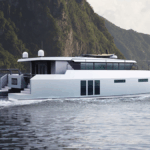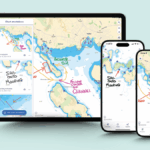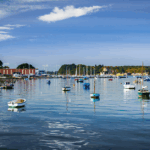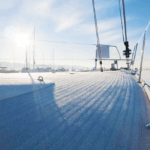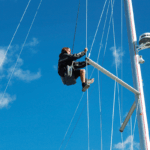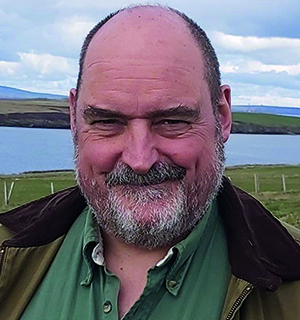 We catch up with author and historian Angus Konstam, whose most recent book is The Pirate Menace: Uncovering the Golden Age of Piracy.
We catch up with author and historian Angus Konstam, whose most recent book is The Pirate Menace: Uncovering the Golden Age of Piracy.
AAS: You are one of the world’s leading authorities on pirates, but where did your interest in pirates stem from?
AK: Back in 1967, my father gave me the Valiant Book of Pirates for Christmas. The seven-year-old me was fascinated by it, with its superb illustrations and exciting stories. I have been a fan ever since. It was 20 years later though, when I was helping the National Maritime Museum put together a major Pirate exhibition that I really started asking questions. I am still asking them, and trying to find answers!
AAS: What are the some of the most remarkable discoveries you made about pirates when researching The Golden Age of Piracy?
AK: Well, we often do not know much about pirates, until they start breaking the law. So, I love coming across Depositions by the captains of merchant ships. Essentially, they are crime reports, sent to colonial governors, explaining what happened during a pirate attack. It includes anything from the name of the pirate captain and his ship, its number of guns and any details the merchant captain can remember about the pirates. Each one tells its own story, but when you add them all together, you build up a picture of a pirate and can track their piratical career. The main thing, though, is just how few of these attacks ended in bloodshed. Like school bullies, most pirates relied on fear to encourage their victims to surrender without firing a shot.
AAS: Which pirate from the ‘The Golden Age’ do you find most interesting?
AK: Oh, most definitely it is Edward Thatch (or Teach), better known as Blackbeard! Back in 2006 I wrote a biography of him. I had uncovered a lot of information about the man and tied it in with the finds coming from the discovery and excavation of his pirate ship, the Queen Anne’s Revenge, which was wrecked off North Carolina. Since then new information has come out about him – more of those depositions for instance – and I now know more about him than I did 20 years ago! Fortunately I was able to incorporate these into The Pirate Menace. That is one of the fun things about history – you may think you have written ‘the definitive book’, but there are always new things to uncover! Blackbeard relied on his ferocious appearance to intimidate his victims – and one of the surprising things about him is that there is no record of him ever having killed anybody. Despite his appearance, he was a bit of a pussy cat!
AAS: As a former naval officer you have travelled the world; do you have a favourite place?
AK: I have not travelled all the world – for instance I have never been east of Suez, so that is on my bucket list. My ultimate happy place though – one which I first discovered when I was serving aboard the aged frigate HMS Falmouth, is Schooner Wharf Bar in Key West, Florida. I could spend all day there – and many years later, while I spent six years curating a maritime museum there – I got to do just that!
AAS: Have your international travels inspired your interest in pirates?
AK: Oh, most definitely. During the Falklands War I was serving aboard a frigate that was too old to go down there, although a couple of her sister ships did. Instead, we spent several months on patrol in the Caribbean. So, years later, when you come to write about pirates, it really helps having been to most of these places, and navigated through their waters.
AAS: You have extensive knowledge about maritime archaeology; is there a particular wreck that fascinates you?
AK: All shipwrecks fascinate me, from the remains of Norse longships to shipwrecks of World War 2. I have taken part in the excavation of some of them, either in British waters or the Americas, and the hackneyed phrase that they are ‘time capsules’ really rings true. Probably the one that grabbed me the most was the ‘Henrietta Marie’, a small English slave ship, which wrecked off the Florida Keys in 1700. I ended up helping curate an exhibit of its finds, which ranged from guns and timbers to more poignant finds, like slave shackles for children. That exhibit travelled around the States, and even landed up in the Smithsonian. I am sure there is still a lot we can learn from it.
AAS: You have written more than 100 history books. If you could travel back in time which era, or specific event, would you choose?
AK: Well, first of all, I rather like living nowadays, with modern medicine, the internet, cars and planes, and the ability to travel quickly and safely, and see the world. If I could go back in time though, it would be hard to choose! Like any historian you have a lot of questions, and you would like to time travel to help find answers. For instance, right now I am writing a book called ‘Lords of the Salt Road’, about the Viking earls of Orkney, which comes out next year. So, it would really help to live where I live now, only 1200 years earlier! There are so many turning points in the past though, which I would like to witness. The danger, of course, is the risk of being brutally slaughtered the moment you step out of your travelling machine!
AAS: Can you share more about your next book?
AK: ‘Lords of the Salt Road’ is a new departure for me. I have taken a step away from the purely maritime world which I usually write about, and gone back to the age of the Vikings. Of course, there are a lot of maritime bits in it – the ‘Salt Road’ is a Norse name for the North Sea, linking Norway with the British Isles. It was used by raiders, traders and Norse leaders hell-bent on conquest. I studied this period back in university, and it has always held an interest for me. Right now though, I am knee-deep in the writing of it, and while it is really engrossing and it is a great tale to tell, it is also frustrating, as you have got a lot of sources like sagas and old chronicles – none of which tell the same story. Still, my job is to navigate the minefield of the past, untangle it all and then tell the story in a way that readers can enjoy.
AAS: You live back in Orkney these days. What is it you love about living there?
AK: I grew up here and left when I joined the Navy. Although I came back to visit my parents, I have lived away from the place for most of my life. Six years ago, when I was approaching 60, we moved back, and we now live in an old farmhouse overlooking the sea. Orkney has a truly magical quality about it – a lot of that is to do with the light, and the sky. The scenery is truly beautiful, and I love it when I can take the dogs to a stunning beach, and there is nobody else there. Of course there are drawbacks – winters can be challenging, and getting anywhere else involves ferries and long drives, or a pricey flight. It is worth it though, particularly in the summers, where you can still read a book outside at midnight. I have seen a lot of the world, but there really is not any other place like it.
The Pirate Menace: Uncovering the Golden Age of Piracy
By Angus Konstam
£25 | Hardback
Published by Osprey Publishing
www.ospreypublishing.com
The Golden Age of Piracy was a time when some of the most notorious pirates in history roamed the seas. This was when legendary figures like Blackbeard, ‘Calico Jack’ Rackam, Charles Vane and ‘Black Bart’ Roberts threatened the established world order, played havoc with maritime trade and instigated a reign of terror on the high seas. Drawing on letters, memoirs, newspapers, crime reports, archaeology and the trials of the pirates themselves, Angus Konstam has weaved together a fascinating and definitive new history of the Golden Age of Piracy.










